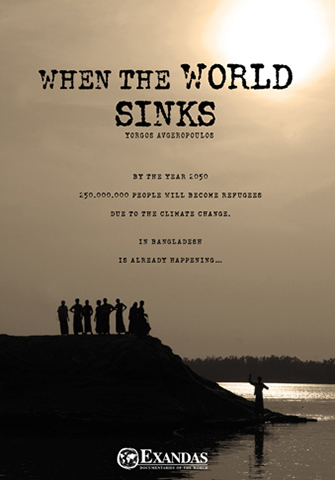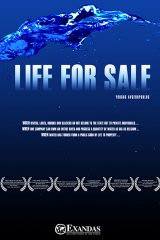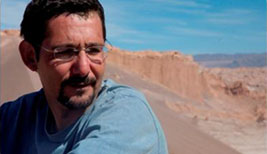
When the World Sinks
Dir: Yorgos AvgeropoulosScientists consider Bangladesh to be the point zero of climate change. As the ice melts, the sea level is rising and this South Asian coastal country is sinking. It is estimated that, by the year 2050, approximately 20 million people will have abandoned their homes in Bangladesh, becoming climate refugees. This is a new and almost unknown term which describes, however, the emergence of the true face of climate change. According to predictions, by the year 2050 more than 250 million people from all over the world will have become climate refugees and will be crossing their countries’ borders. Now scientists warn of consequences not even comparable to the nuclear threat, with the world becoming a constant warzone where no one will live in peace…
Watch the Film Now!
Choose the language you prefer and stream the film in Full HD from any digital device. Enjoy your private screening!
Buy the DVD
€9,99
Public Screening
Are you interested in organizing a public screening of our film? Send us an email with your inquiry and we will be glad to assist you!
Educational / Library Use
Are you interested in enriching the library of your institution with our film? Contact us and let's create together an informed public!
- DURATION: 52min
- AVAILABLE IN THE FOLLOWING LANGUAGES: English | French | Greek
- AVAILABLE VERSIONS: English (52min) | French (52min) | Greek (52min)
- YEAR OF PRODUCTION: 2010
- Written & Directed by: Yorgos Avgeropoulos
- Produced by: Georgia Anagnou
- Director of Photography: Alexis Barzos
- Research Coordinator: Aggelos Athanasopoulos
- Production Manager: Anastasia Skoubri
- Editing: Yiannis Biliris, Anna Prokou
- Original Music: Yiannis Paxevanis
PRODUCTION NOTES
Scientists consider Bangladesh to be the point zero of climate change. It is one of the most vulnerable countries in the world, with 200 rivers running through its territory and a vast area which floods during monsoon every year. As the average height of the coastal areas of Bangladesh is no higher than 3 meters, it is estimated that, by the end of the century, more than 1/5 of the country will be under water.
“Even if the whole world becomes an ‘angel’, the rise of the sea level never stops. It has its own momentum and continuity”, says Nobel Prize winner, Professor Atiq Rahman, Lead Author of the report of the Intergovernmental Panel on Climate Change. “Climate change has already begun, it is already here”, he asserts.
The inhabitants of Bangladesh know that all too well. According to the IPCC, 1 in 7 will be forced to leave their home by 2050, a total of almost 20 million people. As the world’s map begins to change, the biggest wave of climate refugees will begin here.
The people of Bangladesh are already witnessing dramatically the consequences of climate change. The rise of the sea level, combined with an increasing temperature, confronts the country with extreme weather conditions, more often and unpredictable than ever. On the 25th of May, 2009, Cyclone Aila struck Bangladesh and India. On that day, the speed of the wind reached 110 km/h. Official sources spoke of 325 dead, 8,000 missing and 1,000,000 homeless.
The island of Gabura, in the southern coastal area of Bangladesh, found itself in the eye of the cyclone. Survivors vividly describe the moment when 8-meter high waves broke the area’s dikes. “It was the first time we ever saw anything like it. Waves and wind came from the East… everything was flooded, you couldn’t even see the trees because of the water. People were hanging on the trees, the river would bring televisions, people, furniture… It was like nothing I had ever seen before! I have seen many cyclones, but nothing like Aila!”
Six months later, Gabura is still suffering the catastrophic consequences of the disaster. The remainder of the dike surrounding the island is today the world’s narrowest refugee camp, harboring 35,000 people. As it is the only spot which is still above the water, the inhabitants put all that was left from their households there, in shacks made of wood and canvas, one on top of the other.
Sorbhanu Hathun is trying to start a new life on this strip of land. She explains that the cyclone deprived her family of the necessary means for survival: “Before Aila, we had a net and a boat and my son would go fishing. I would go to the mountain and pick up wood, I’d sell it and we lived very well. Now, everything is destroyed, Aila took away the boat and the net, the houses were destroyed, those who worked on the fields have no jobs any more”… Suhel, Sorbhanu’s 15-year-old son, left to work at a brick factory in order to help the family’s economy. Like him, each year 500,000 people abandon the coastal areas and establish themselves in Dhaka’s shantytowns.
Today, the capital of Bangladesh is one of the world’s fastest growing cities, an image of the metropolis of the future. Its population has doubled in 10 years, exceeding the amount of 12 million. Suhel looks at the big city bewildered: “The truth is I’m having a hard time here. The job is hard, the food is not good and the money isn’t even enough for me. But what can I do? I don’t have a home to return to”. The International Organization for Migration (IOM) confirms that 70% of Dhaka’s shantytown inhabitants, almost 3.5 million people, moved here as a consequence of some environmental problem in their areas.
Recent research conducted by the United Nations University Institute for Environment and Human Safety estimated that, by 2010, those displaced due to environmental problems will reach 50 million around the world. They already outnumber those displaced due to wars and political persecution put together! And, according to the IOM, by the year 2050, the number of climate refugees around the world will be over 250 million, crossing, of course, their country’s borders…
And yet, international law does not protect climate refugees now, as the term is not included in the 1951 Geneva Convention for refugees, on which changes have been recently proposed. “There must be an international law that will help these people lead a better life”, asserts Mr. Abu Kamal Uddin, spokesman for the Ministry for the Environment of Bangladesh. “We are not responsible for climate change. The developed countries that enjoy development must take care of these people. Whatever the name they give them, refugees or something else, whatever the law, I don’t care… My people are dying and you’re still making calculations”…
“Nobody will be out of this problem”, Mr. Rahman of the IPCC asserts. “Big port cities in the world, Tokyo and London, they will all be threatened. Just like in a boat, we will float together or we will sink together”. And he stresses that destruction could come under a different guise: “When thousands of people will be forced to leave their disappearing areas, it will not even be comparable to the nuclear threat. It will be a different world, no one will live in peace”…







